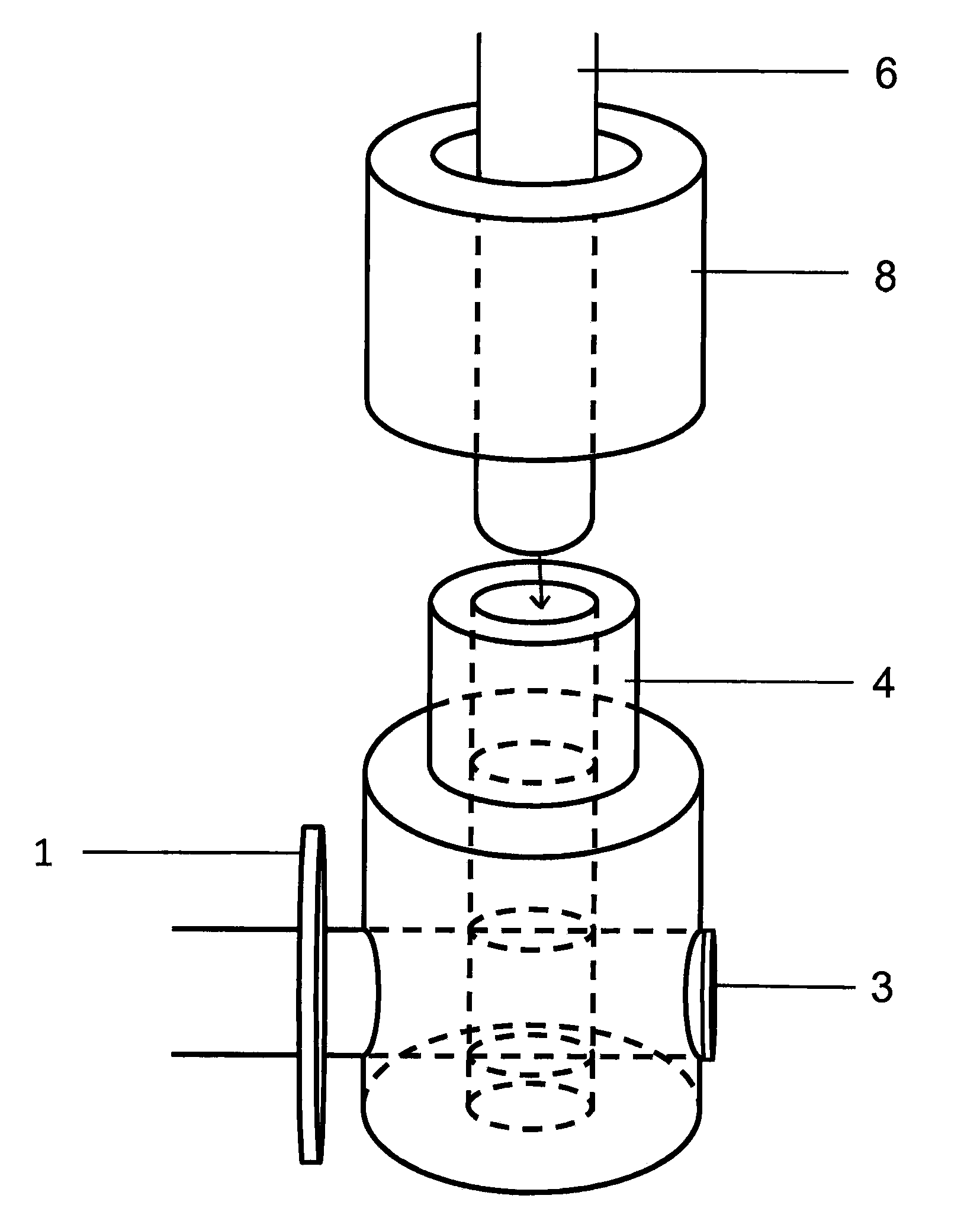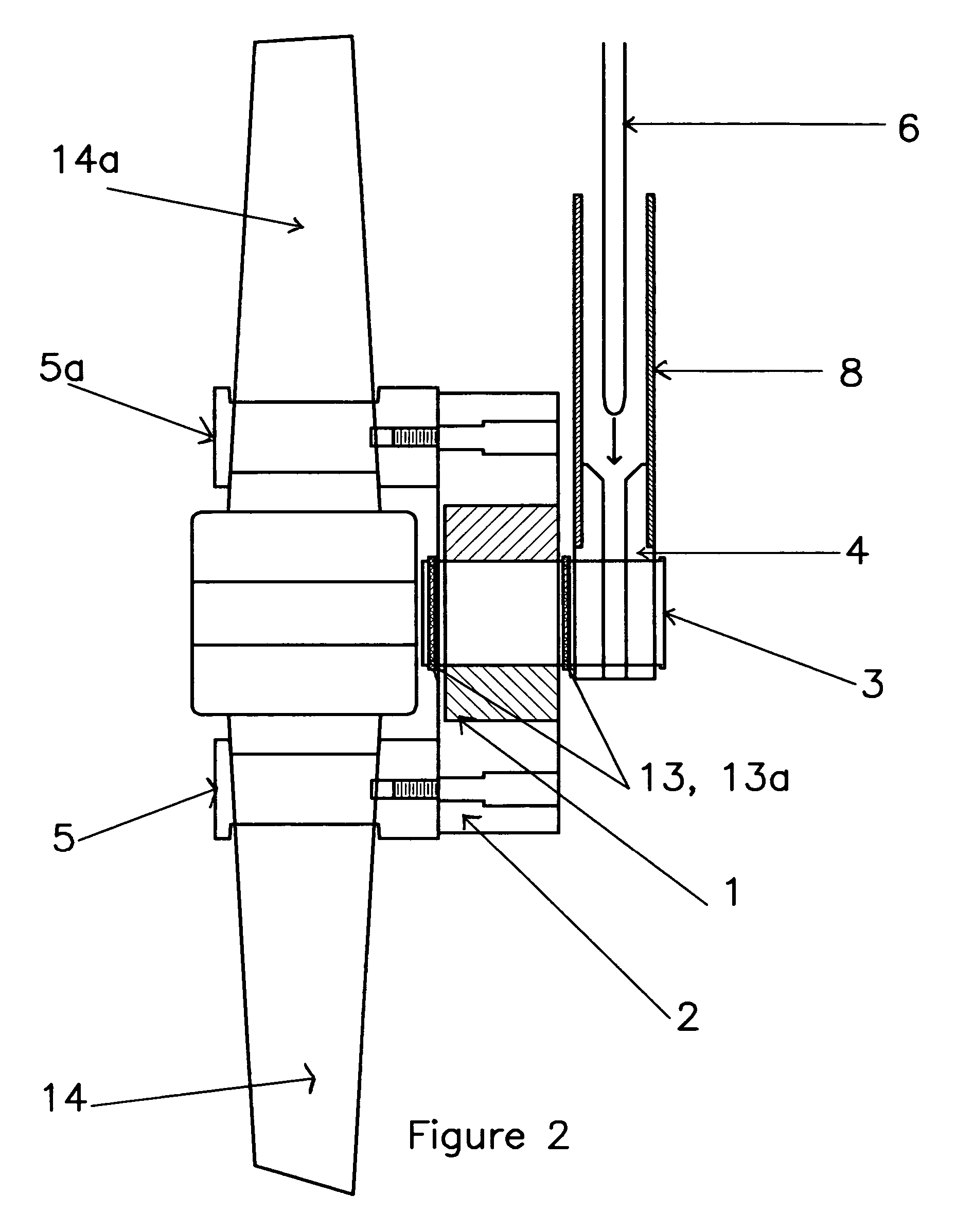Manual wheelchair drive system
a drive system and manual technology, applied in the direction of wheelchair/patient transportation, transportation and packaging, cycles, etc., can solve the problems of inability to provide a silent means of propulsion in the prior ar
- Summary
- Abstract
- Description
- Claims
- Application Information
AI Technical Summary
Benefits of technology
Problems solved by technology
Method used
Image
Examples
Embodiment Construction
[0026]FIG. 1 shows a perspective cross section of a drive axle 3 extending through an aperture of drive lever mounting pin 4, and then through the center of one-way bearing 1. Apertures for drive rod 6 in drive lever mounting pin 4 and axle 3 can be seen; dotted lines describe both apertures. The distal tips of drive rod 6 and drive lever 8 can be seen above drive lever mounting pin 4. The distal tip of the tubing comprising drive lever 8 is pressed down to the shoulder of drive lever mounting pin 4, and then permanently attached via an attachment means upon assembly. The driver lever 8, or handle, is in one embodiment as a metal tubing.
[0027]FIG. 2 shows a cross section of one-way bearing 1 in housing 2 attached to the wheelchair drive wheel spokes 14 / 14a by means of drive lugs 5 / 5a. Said drive lugs, which can be rigidly attached to housing—in this embodiment by threaded fasteners—clamp said spokes. Various embodiments will have a varying numbers of lugs, and various lug cross-sect...
PUM
 Login to View More
Login to View More Abstract
Description
Claims
Application Information
 Login to View More
Login to View More - R&D
- Intellectual Property
- Life Sciences
- Materials
- Tech Scout
- Unparalleled Data Quality
- Higher Quality Content
- 60% Fewer Hallucinations
Browse by: Latest US Patents, China's latest patents, Technical Efficacy Thesaurus, Application Domain, Technology Topic, Popular Technical Reports.
© 2025 PatSnap. All rights reserved.Legal|Privacy policy|Modern Slavery Act Transparency Statement|Sitemap|About US| Contact US: help@patsnap.com



